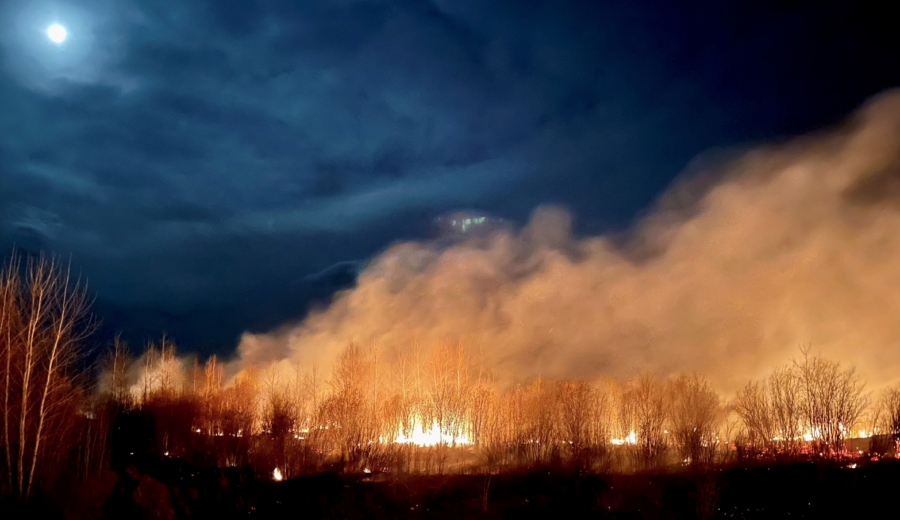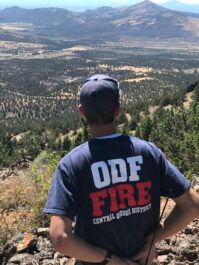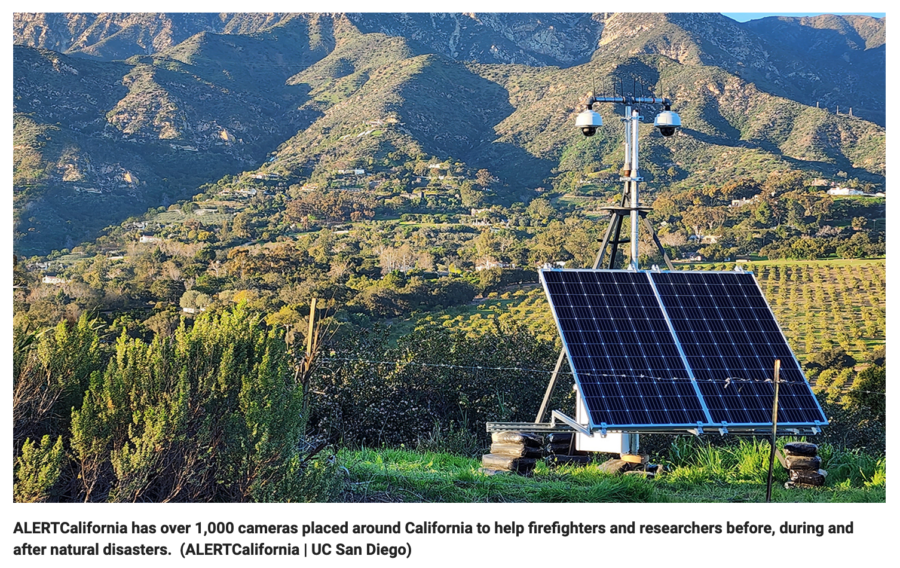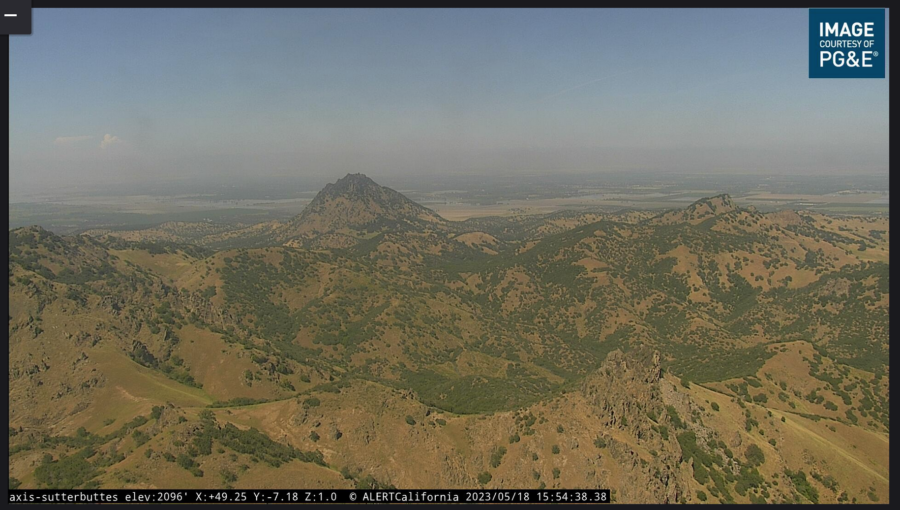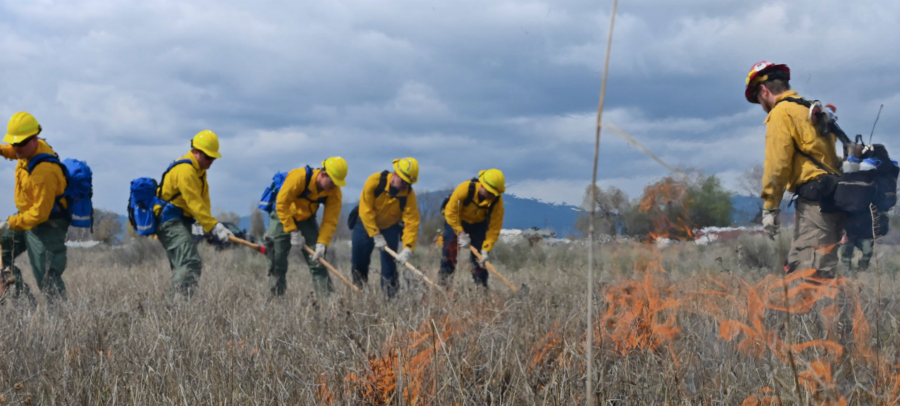Over the Labor Day holiday in 2020, with east winds picking up toward the end of a long, hot and dry summer, Leland Ohrt was dispatched to a home not far from his own, where a tree branch had fallen on a powerline and started a small brush fire. Ohrt was Mill City Fire Chief, a VFD chief in a small town in western Oregon’s Cascades; he hosed down the fire, then drove over to Schroeder Road, where another tree branch had fallen over another powerline and was still arcing sparks into the dry fuels below. Ohrt couldn’t stop the sparking, so he hosed the utility lines with water until they exploded and de-energized themselves.
Those two incidents initiated a frenzied 48 hours for Ohrt, acccording to an OPB report today, and he was later recognized for his efforts to save Mill City as the fires destroyed thousands of homes down the Santiam Canyon and across other parts of western Oregon.
Chief Ohrt saw Pacific Power’s utility lines start those fires, but he took the stand last week to defend the utility company in a class action trial against Pacific Power. He told a jury in Multnomah County Circuit Court that he immediately blew off attorneys who’d sent him paperwork in the weeks following the fires — lawyers who were trying to contact fire victims.
“I threw all that paperwork away,” Ohrt said. “You could tell right off the bat they were going to go after Pacific Power for this.”
Ohrt’s testimony highlighted a key aspect of the defense Pacific Power’s corporate owners, PacifiCorp, expect to lay out in the coming weeks of the trial: Most of the wildfires in the Santiam Canyon started not from their powerlines, but from embers of the Beachie Creek Fire. Even in places where powerlines did start fires, PacifiCorp’s attorneys contend that people fighting those fires quickly got them under control.
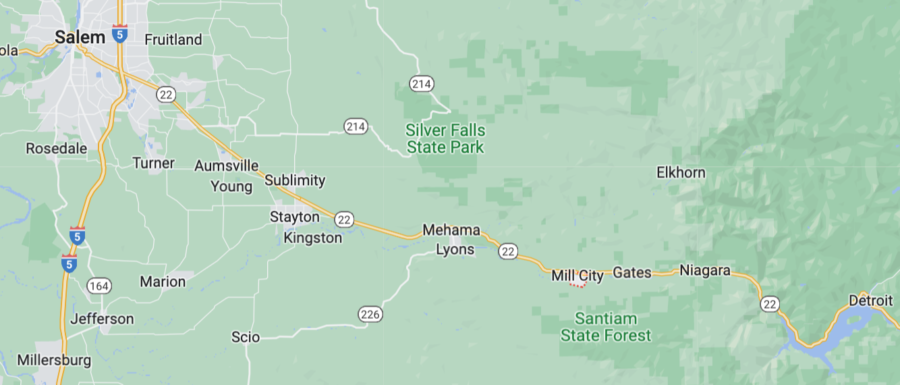
The defense follows what has been several weeks of plaintiffs’ attorneys alleging that PacifiCorp acted negligently by keeping its lines energized during the Labor Day fires, even though they had plenty of warning from weather officials and state government about fire danger. The decision to keep the power on contributed to fires spreading out of control, according to the plaintiffs and their attorneys.
Ohrt though, under questioning from PaficiCorp’s lawyers, pointed to another culprit: the U.S. Forest Service. Ohrt has more than 45 years’ experience with Mill City’s volunteer fire department, but he does not have any experience fighting wildfires.
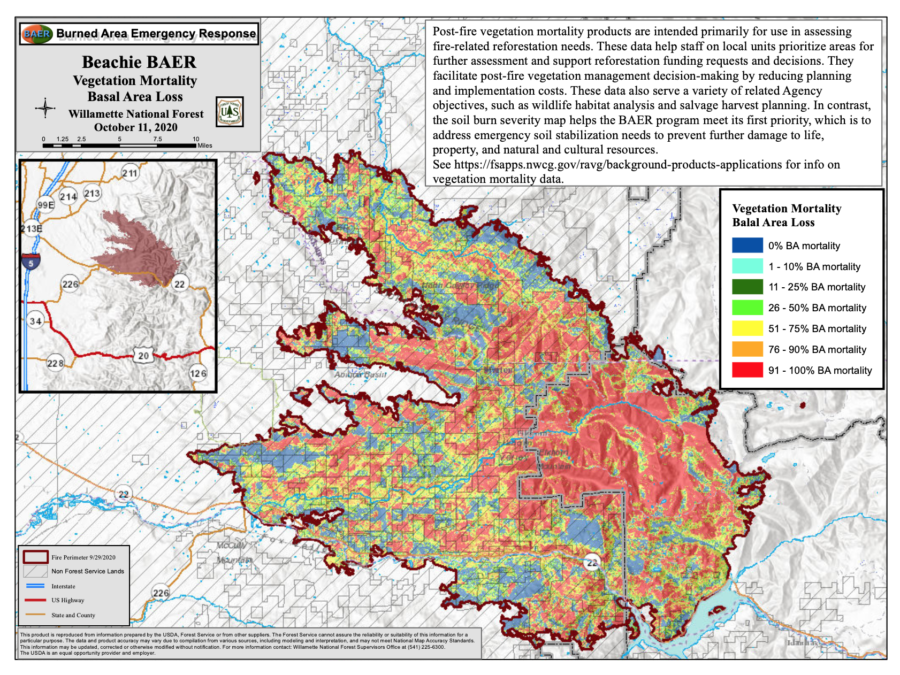
The inciweb images and maps and pages have been retired from the internet, but a few files remain on the Willamette NF site.
Weeks before the Santiam Canyon fires, a lightning strike started the Beachie Creek Fire — northeast of Gates in the Opal Creek Wilderness. Forest Service officials said then that steep terrain made it difficult to get crews to the site to contain the slowly growing fire. According to Ohrt, though, letting the Beachie Creek Fire smolder allowed it to throw embers into the Santiam Canyon when winds picked up on Labor Day.
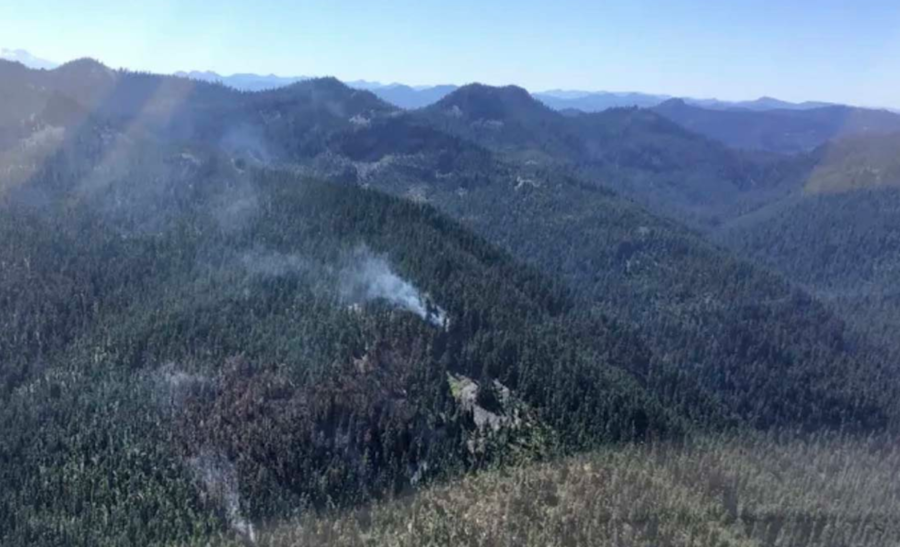
An excellent “storymap” about the Beachie Creek Fire is [HERE].
“The U.S. Forest Service was supposed to be fighting that fire,” Ohrt said in his testimony.
Late in 2020 Linn County had to sue the Forest Service to get fire documents.
The Type 3 IC at the time knew that air support was critical, according to a USFS review of the fire, but he also recognized that the fire was burning in an old growth stand, meaning there was a multistory canopy with abundant down logs, duff, moss, and fuels. He knew that getting firefighters on the ground to dig deep for hotspots was the only way to successfully contain the fire.
“Everyone assumes that if you hammer a fire with aerial resources, it will go out, but that’s not the case. There needs to be boots on the ground working in tandem with aircraft. There are hidden hotspots, sheltered from aerial attack, under big logs and deep roots that have to be dug out.”
~ unnamed Type 3 Incident Commander
Whether jurors in the case find PacifiCorp responsible for the wildfires in the Santiam Canyon will likely be influenced by which attorneys’ experts they find more believable. Oregon State University professor John Bailey, for example, testified that there was no way the Beachie Creek Fire could have thrown embers far enough before midnight on Labor Day 2020 to start fires near the town of Gates. Bailey, who teaches fire management and has been studying forestry since the 1980s, said he used topography data, recorded weather conditions, and fuels analysis to estimate where the Beachie Creek Fire could have thrown embers ahead of its front to start new fires. He said strong east winds that night would have — at most — lit spot fires north of Gates and other residential areas in the canyon.
PacifiCorp’s attorneys, on the other hand, had atmospheric sciences professor Neil Lareau of the University of Nevada testify, and he said the extreme weather conditions that night did indeed throw firebrands miles ahead of the Beachie Creek Fire. Lareau explained to jurors how he used satellite data from the fire to determine when plumes of debris burst from the fire and cast embers thousands of feet aloft. He said those plumes matched up with on-the-ground reports of spot fires in the Santiam Canyon. Bailey, by contrast, said embers thrown by fires can rarely travel more than a mile — a far shorter distance than needed to start the fires Lareau claimed originated from the Beachie Creek Fire.

